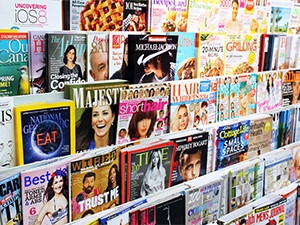
The Internet's long-term effects on traditional media consumption are apparent in Playboy's announcement on Tuesday that its flagship magazine will no longer publish images of fully nude women as of March 2016.
"You're now one click away from every sex act imaginable for free," CEO Scott Flanders told the New York Times. In the wake of a diverse ubiquity of online pornography, Playboy's nude images have lost their novelty.
The magazine's move away from nude photographs comes after the media and lifestyle company banished nude images from its Web site in August 2014, in a drive to increase its usability and appeal to more users.
The Web site reported a leap in traffic from 4 million to 16 million unique monthly users, and a drop in the average age of users from 47 to 30, after making this change. The Web site is now "SFW" or "safe for work", meaning it is appropriate for users to view openly in a wider variety of settings.
Eschewing nude images also ups the "shareability" of Playboy's content on social networks such as Facebook and Instagram, on which nudity is banned.
Lifestyle lives on
Playboy's decision to axe a central element of its brand is "quite a smart move", says Mike Sharman, MD at Retroviral.
Pornographic magazines are particularly threatened by the rise of free online media, says Sharman. Numerous pornographic print titles have gone out of business since their primary product was eclipsed by online porn, he says. One of which is Australia's Zoo Magazine, which published its final issue the same day Playboy made its landmark announcement.
Men's magazines stand a better chance capitalising on lifestyle content, says Sharman, noting that as pornographic magazines disappear from shelves, titles such as GQ remain.
Playboy's move away from nude photography signals a move towards this more specialised, less easily replaced content.
'Analogue paywalls'
Yet all magazines are faced with the challenge of finding new revenue models in a digital era. Beyond the fact that "magazines effectively represent... an analogue version of paywalls," which have proved an ineffective way of monetising online content, simply moving content online and gathering revenue through advertising is insufficient, says Sharman.
Branded content is one new avenue traditional publishers could take more advantage of, he says.
Indeed, Playboy's US magazine currently operates at a loss - circulating around 800 000 copies as opposed to 5.6 million in 1975, according to Alliance for Audited Media - existing instead as a central component to the Playboy brand. In 2014, Playboy made $1.5 billion selling branded merchandise such as condoms, deodorants and electronic cigarettes.
Traditional magazines could also benefit from partnering from media partnerships with other brands, Sharman adds.
Share